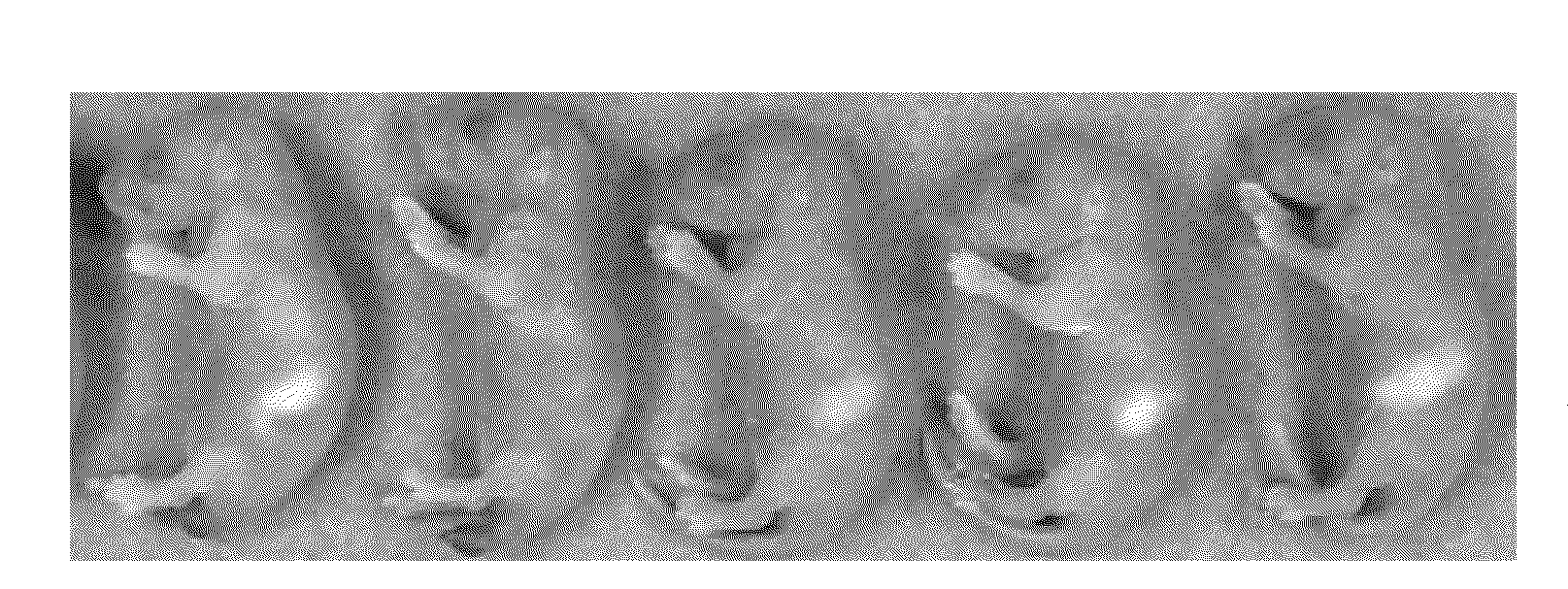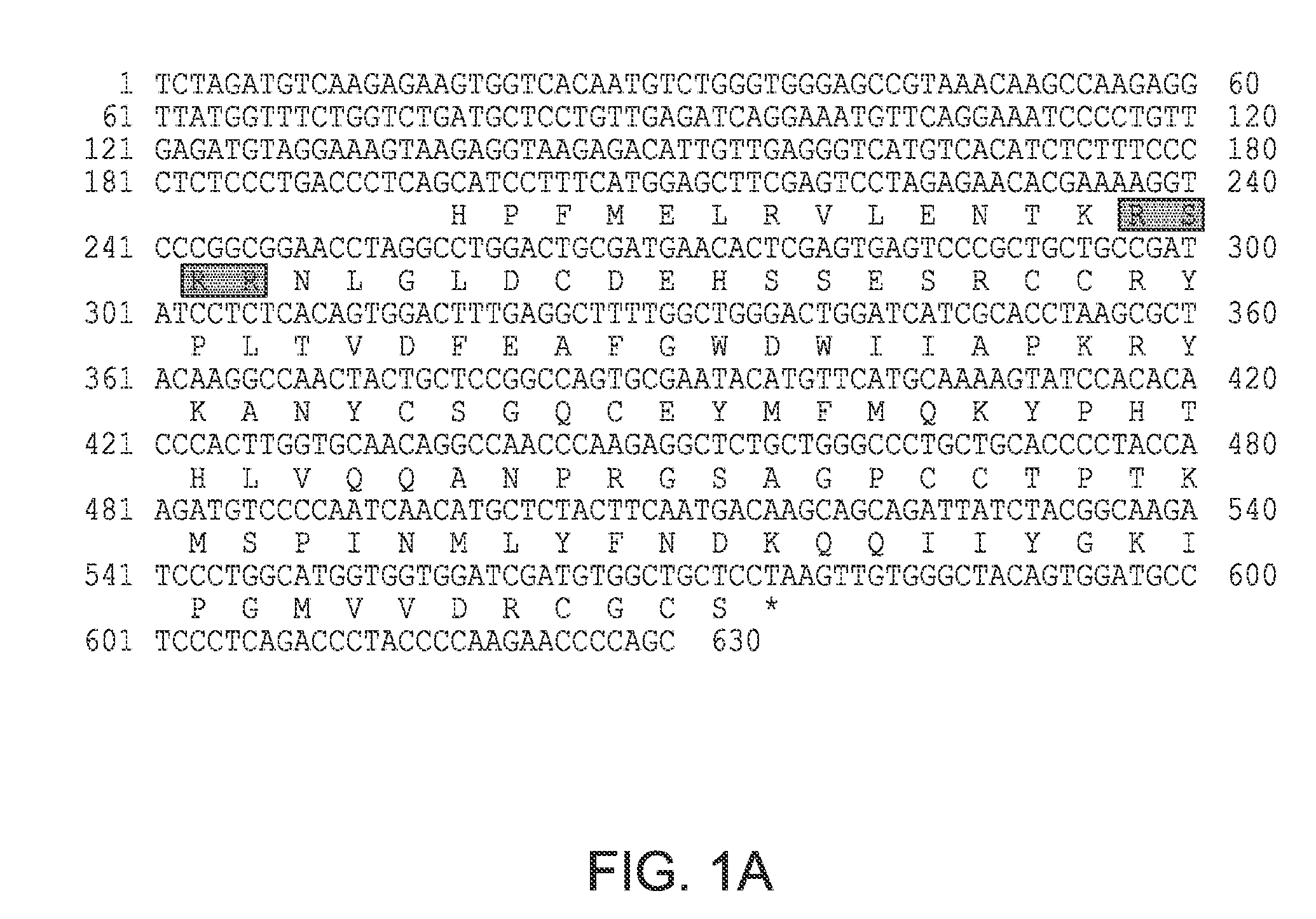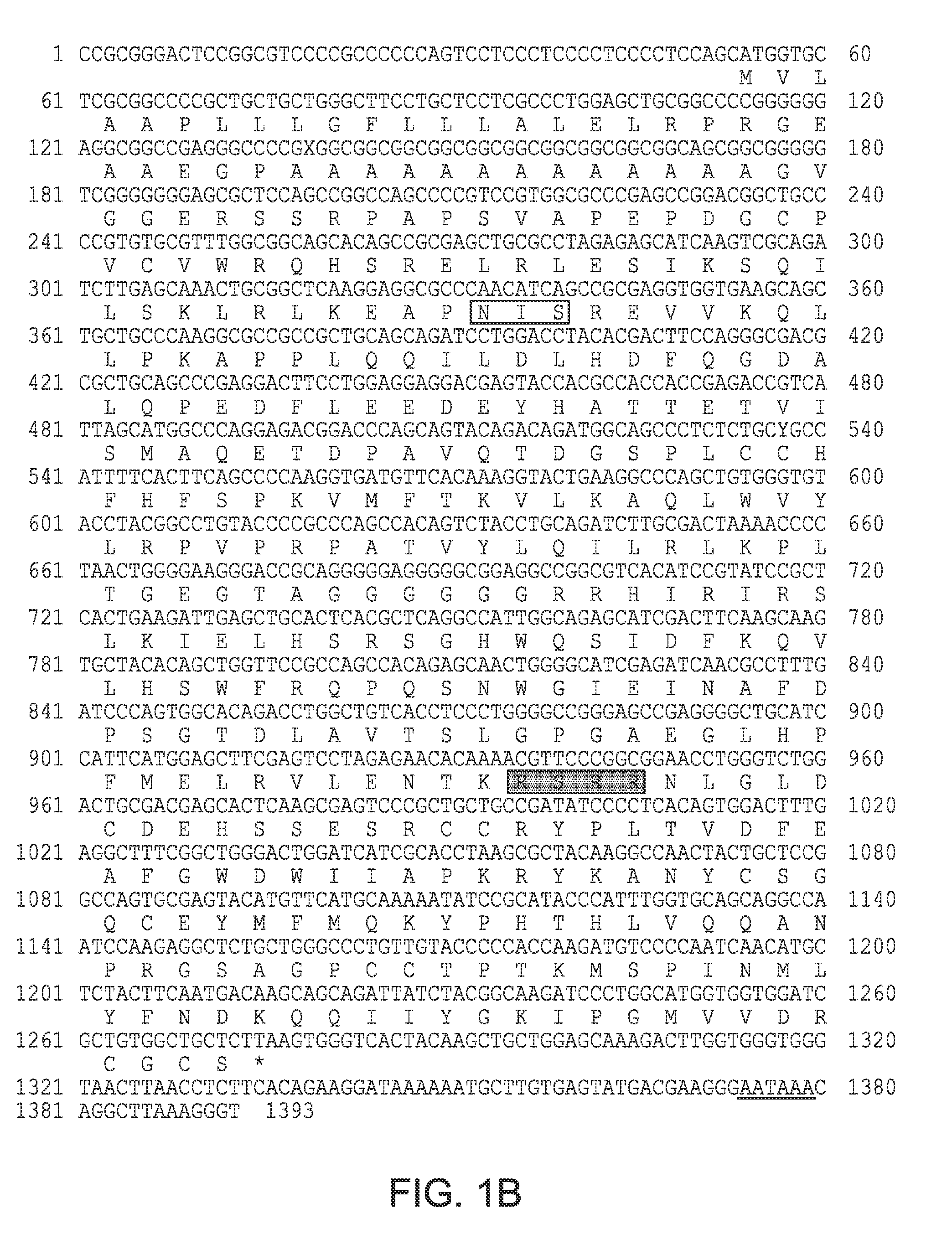Growth Differentiation Factor-11
a growth differentiation factor and growth factor beta technology, applied in the field of growth factors, can solve the problems of limited success in the preparation of animal foodstuffs
- Summary
- Abstract
- Description
- Claims
- Application Information
AI Technical Summary
Benefits of technology
Problems solved by technology
Method used
Image
Examples
example 1
Identification and Isolation
of a Novel TGF-β Family Member
[0131]To identify novel members of the TGF-β superfamily, a murine genomic library was screened at reduced stringency using a murine GDF-8 probe (FIG. 8; nucleotides 865-1234) spanning the region encoding the C-terminal portion of the GDF-8 precursor protein. Hybridization was carried out as described (Lee, Mol. Endocrinol., 4:1034, 1990) at 65° C., and the final wash was carried out at the same temperature in a buffer containing 0.5 M NaCl. Among the hybridizing phage was one that could be distinguished from GDF-8-containing phage on the basis of its reduced hybridization intensity to the GDF-8 probe. Partial nucleotide sequence analysis of the genomic insert present in this weakly hybridizing phage showed that this clone contained a sequence highly related to but distinct from murine GDF-8.
[0132]A partial nucleotide sequence of the genomic insert present in this phage is shown in FIG. 1A. The sequence contained an open read...
example 2
Expression of GDF-11
[0133]To determine the expression pattern of GDF-11, RNA samples prepared from a variety of tissues were screened by northern blot analysis. RNA isolation and northern analysis were carried out as described previously (Lee, Mol. Endocrinol., 4:1034, 1990) except that the hybridization was carried out in 5×SSPE, 10% dextran sulfate, 50% formamide, 1% SDS, 200 μg / ml salmon DNA, and 0.1% each of bovine serum albumin, ficoll, and polyvinylpyrrolidone. Five micrograms of twice poly A-selected RNA prepared from each tissue (except for 2 day neonatal brain, for which only 3.3 μg RNA were used) were electrophoresed on formaldehyde gels, blotted, and probed with GDF-11. As shown in FIG. 2, the GDF-11 probe detected two RNA species, approximately 4.2 and 3.2 kb in length, in adult thymus, brain, spleen, uterus, and muscle as well as in whole embryos isolated at day 12.5 or 18.5 and in brain samples taken at various stages of development. On longer exposures of these blots,...
example 3
Isolation of cDNA Clones Encoding GDF-11
[0134]In order to isolate cDNA clones encoding GDF-11, a cDNA library was prepared in the lambda ZAP II vector (Stratagene) using RNA prepared from human adult spleen. From 5 μg of twice poly A-selected RNA prepared from human spleen, a cDNA library consisting of 21 million recombinant phage was constructed according to the instructions provided by Stratagene. The library was screened without amplification. Library screening and characterization of cDNA inserts were carried out as described previously (Lee, Mol. Endocrinol., 4:1034, 1990). From this library, 23 hybridizing phage were obtained.
[0135]The entire nucleotide sequence of the clone extending furthest toward the 5′ end of the gene was determined. The 1258 base pair sequence contained a single long open reading frame beginning from the 5′ end of the clone and extending to a TAA stop codon. Because the open reading frame and the homology with GDF-8 (see below) extended to the very 5′ en...
PUM
| Property | Measurement | Unit |
|---|---|---|
| temperature | aaaaa | aaaaa |
| disorder | aaaaa | aaaaa |
| genetic composition | aaaaa | aaaaa |
Abstract
Description
Claims
Application Information
 Login to View More
Login to View More - R&D
- Intellectual Property
- Life Sciences
- Materials
- Tech Scout
- Unparalleled Data Quality
- Higher Quality Content
- 60% Fewer Hallucinations
Browse by: Latest US Patents, China's latest patents, Technical Efficacy Thesaurus, Application Domain, Technology Topic, Popular Technical Reports.
© 2025 PatSnap. All rights reserved.Legal|Privacy policy|Modern Slavery Act Transparency Statement|Sitemap|About US| Contact US: help@patsnap.com



